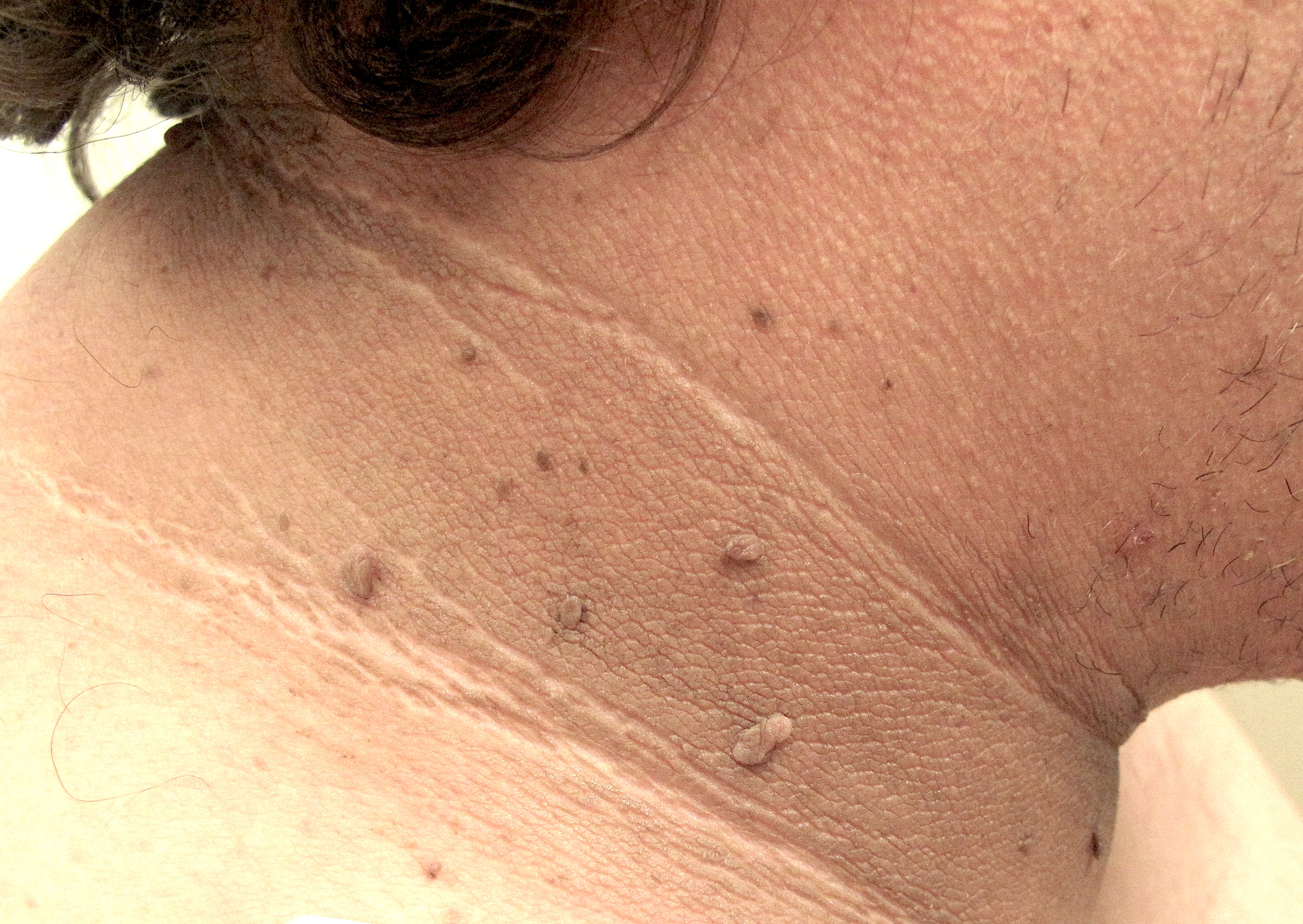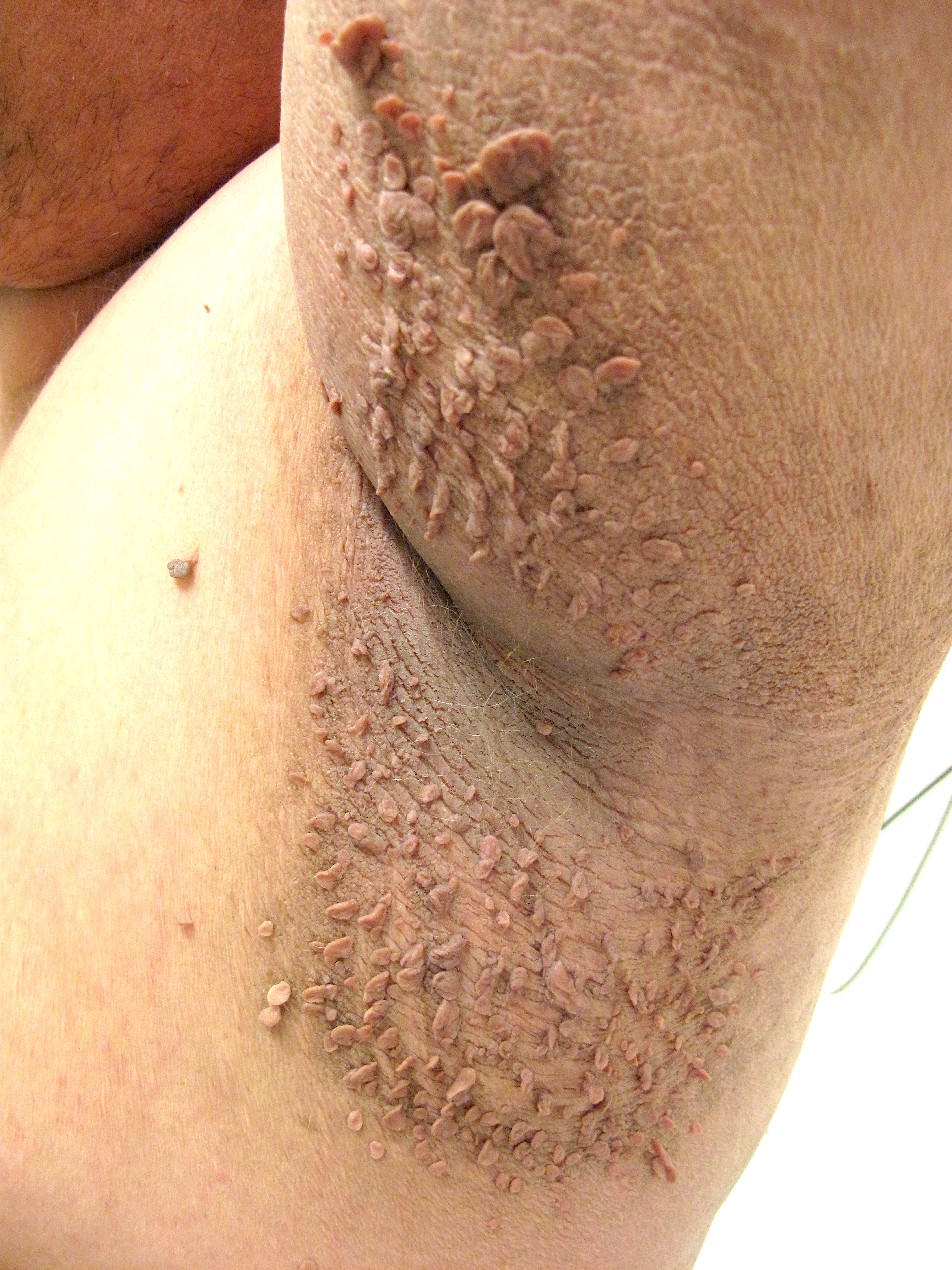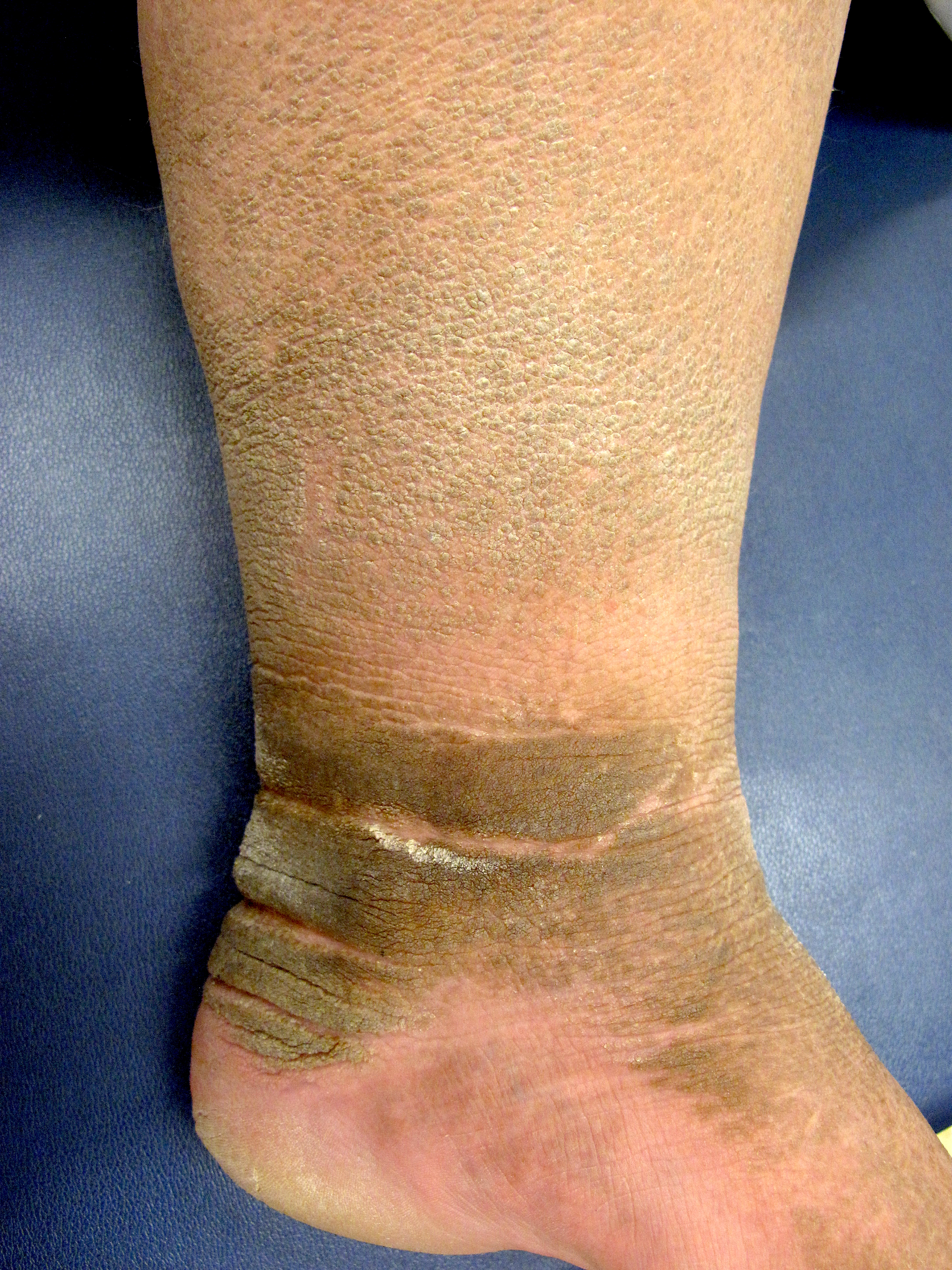Peer Reviewed
Acanthosis Nigricans
Authors:
Alina G. Zufall, BA
Department of Dermatology, University of Virginia, Charlottesville, Virginia
Barbara B. Wilson, MD
Department of Dermatology, University of Virginia, Charlottesville, Virginia
Citation:
Zufall AG, Wilson BB. Acanthosis nigricans. Consultant. 2019;59(12):375-376.
A 34-year-old man presented to a general dermatology practice for evaluation of extensive skin tags on the bilateral axillae. The patient reported several skin problems that had started 6 years ago, after he gained approximately 200 pounds. His medical history was significant for prediabetes, but he denied having had a workup for endocrinopathies.
On physical examination, the patient had hyperpigmented velvety plaques involving his neck, back, axillae, dorsal hands, antecubital fossae, ankles, and feet (Figures 1-3). Additionally, there were hundreds of skin tags involving much of the axillary tissue and inguinal folds, as well as some scattered on the thighs.

Figure 1. Velvety hyperpigmented plaques and skin tags on the neck.

Figure 2. Velvety hyperpigmented plaques and skin tags on the left axilla.

Figure 3. Thick tan/gray velvety plaques on the right leg and ankle.
The patient received a clinical diagnosis of severe acanthosis nigricans (AN). He was treated with urea 40% cream. He was referred to endocrinology for workup of possible endocrinopathy, the results of which revealed a normal dehydroepiandrosterone sulfate level and a normal spot cortisol level, but his level of C-peptide of insulin was significantly elevated, indicating hyperinsulinemia.
At a 9-month follow up appointment, the patient had lost approximately 100 pounds, and the AN had improvement markedly. While he still had extensive skin tags, these were only of cosmetic concern. Continued dermatology follow-up was therefore deemed unnecessary. However, due to the patient’s hyperinsulinemia and risk of developing type 2 diabetes mellitus (T2DM), an endocrinologist will continue to carefully follow the patient’s case.
DISCUSSION
AN is diagnosed clinically due to its characteristic appearance. The lesions often present as symmetric, hyperpigmented, hyperkeratotic velvety patches or plaques, and they can appear anywhere on the body.1,2 The most common locations for AN lesions are on the neck, groin, armpits, and flexural surfaces.1,2 They appear less commonly on the palms and soles.1
While once considered a rare condition associated with underlying malignancy or severe insulin resistance, AN is now much more common.3 This is due to its association with obesity and, more specifically, hyperinsulinemia.3 Individuals with AN have significantly elevated fasting insulin levels compared with normal control subjects or weight-matched subjects without AN.4 Therefore, AN is a better predictor of insulin levels than obesity and can be used as a significant marker of insulin resistance and risk of developing T2DM.1,3,4 It is thought that overproduction of insulin-like growth factor in hyperinsulinemia leads to overstimulation of dermal fibroblasts and keratinocytes, producing the characteristic hyperkeratotic AN lesions.5
Extensive skin tags, or acrochordons, are another common cutaneous finding in obese individuals.1 Skin tags are benign, soft, pedunculated lesions that usually pose only a cosmetic concern. However, Hui and colleagues recently demonstrated an almost 4-fold increase in the risk of metabolic syndrome in patients with multiple skin tags.6 Additionally, Sudy and colleagues found the presence of 8 or more skin tags on the neck of male patients to be a more sensitive marker for hyperinsulinemia, insulin resistance, glucose intolerance, and T2DM than AN.7 Therefore, a workup for hyperinsulinemia in a patient with multiple skin tags, even without AN, is indicated.
After a clinical diagnosis of AN is made, it is important to search for the underlying cause, such as T2DM, endocrinopathies, malignancy, or medications.2 Treatment of AN involves addressing the causative process, which includes treatment of the tumor in cases of malignancy or removing the offending medication in drug-induced AN.2 In cases of hyperinsulinemia and insulin resistance, adding a medication, such as metformin, to increase insulin sensitivity is often indicated to prevent the onset of T2DM.1,2 If the patient’s condition has already progressed to T2DM, treatment with metformin is absolutely indicated.3
To improve the appearance of AN lesions themselves, weight loss and lifestyle changes alone often produce good results.1,2 Some topical medications such as tretinoin, 0.05%, or ammonium lactate can be helpful in hyperkeratotic cases due to their keratolytic effects.2 Calcitriol, urea, podophyllin, and salicylic acid have also been used but have demonstrated variable results.2
Because AN is a marker for several different disease processes, the ability to recognize its lesions is paramount. With the significant rise of obesity in the United States, screening these patients for AN will be crucial in preventing the development of T2DM and other metabolic disorders.
- Barbato MT, Criado PR, da Silva AK, Averbeck E, Guerine MB, de Sá NB. Association of acanthosis nigricans and skin tags with insulin resistance. An Bras Dermatol. 2012;87(1):97-104.
- Kutlubay Z, Engin B, Bairamov O, Tüzün Y. Acanthosis nigricans: a fold (intertriginous) dermatosis. Clin Dermatol. 2015;33(4):466-470.
- Stuart CA, Driscoll MS, Lundquist KF, Gilkison CR, Shaheb S, Smith MM. Acanthosis nigricans. J Basic Clin Physiol Pharmacol. 1998;9(2-4):407-418.
- Gilkison C, Stuart CA. Assessment of patients with acanthosis nigricans skin lesion for hyperinsulinemia, insulin resistance and diabetes risk. Nurse Pract. 1992;17(2):26,28,37.
- Flier JS, Usher P, Moses AC. Monoclonal antibody to the type I insulin-like growth factor (IGF-I) receptor blocks IGF-I receptor-mediated DNA synthesis: clarification of the mitogenic mechanisms of IGF-I and insulin in human skin fibroblasts. Proc Natl Acad Sci U S A. 1986;83(3):664-668.
- Hui ESY, Yip BHK, Tsang KW, Lai FTT, Kung K, Wong SYS. Association between multiple skin tags and metabolic syndrome: a multicentre cross-sectional study in primary care. Diabetes Metab. 2016;42(2):126-129.
- Sudy E, Urbina F, Maliqueo M, Sir T. Screening of glucose/insulin metabolic alterations in men with multiple skin tags on the neck. J Dtsch Dermatol Ges. 2008;6(10):852-855.


